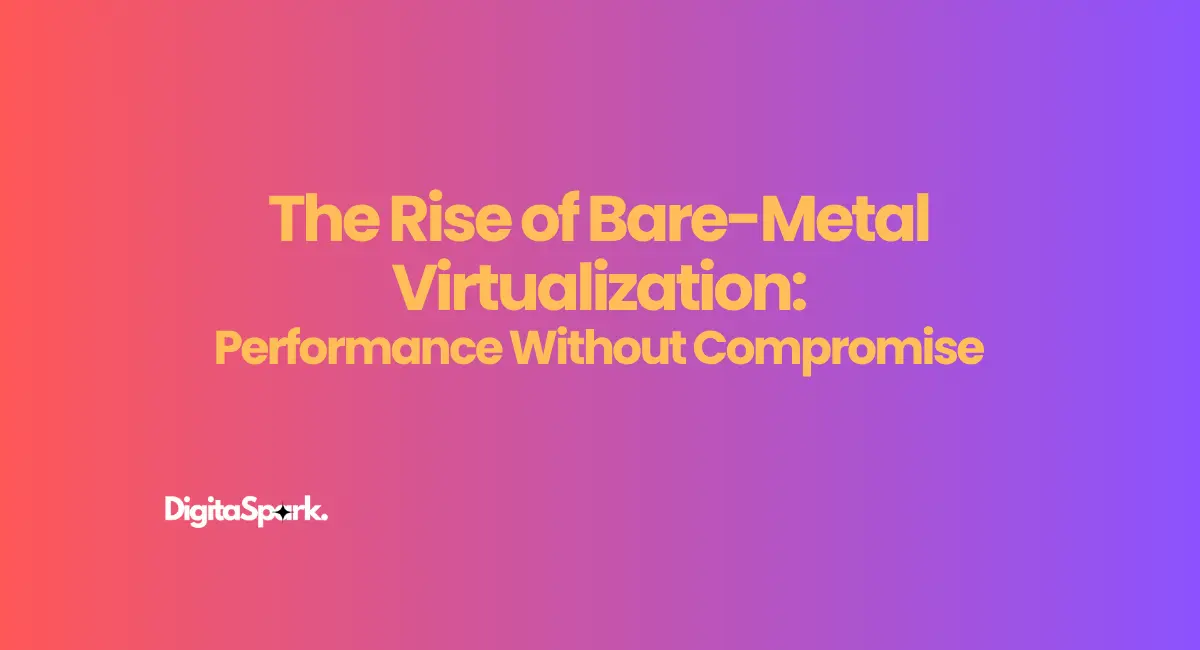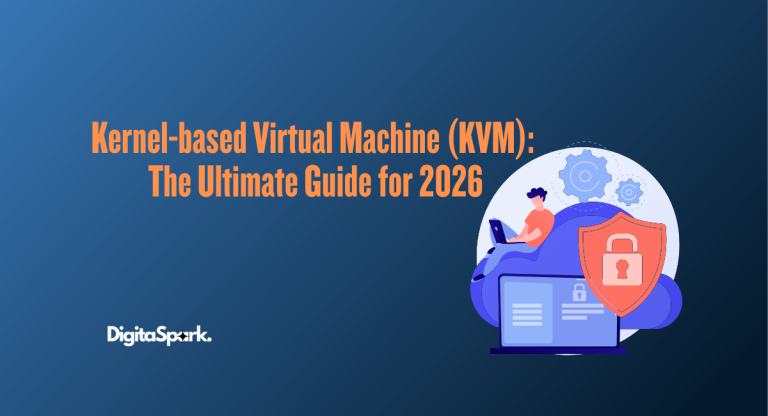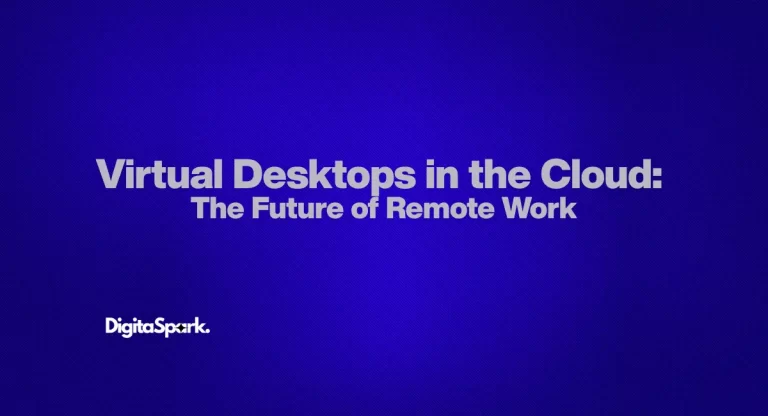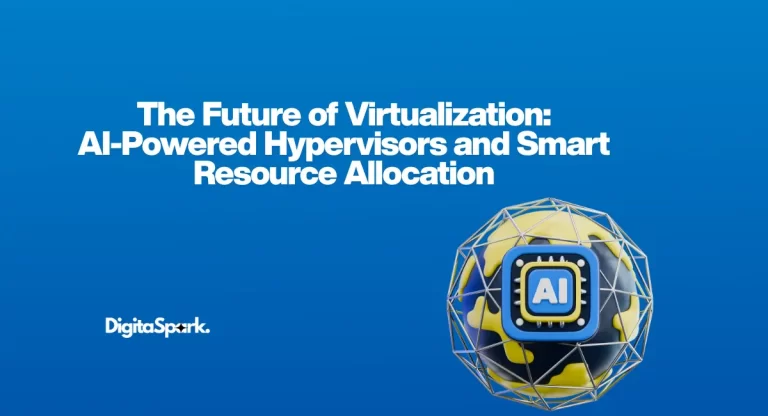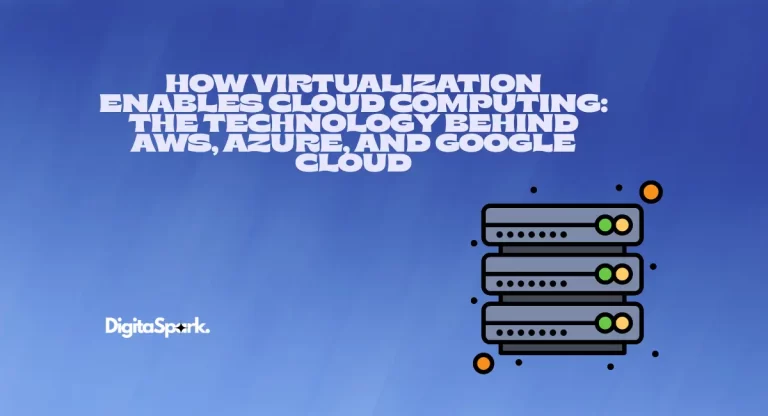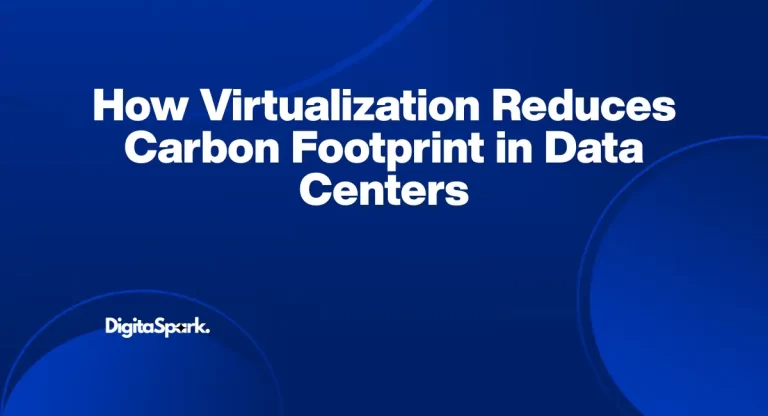The Rise of Bare-Metal Virtualization: Performance Without Compromise
If there’s one thing that hasn’t changed in technology, it’s our obsession with speed. Every new wave—from virtualization to cloud to containers—promised faster systems, more efficiency, and fewer headaches. But as the years passed, many engineers began to notice something. We’d made computing more flexible, yes, but not always faster. Somewhere between the hardware and the applications, layers started to pile up—each adding a little convenience but taking away a little performance.
And now, we’re circling back to something that sounds almost old-school: bare-metal virtualization. The term might sound like an oxymoron—how can you be both “bare metal” and “virtualized”? But that’s the beauty of it. It’s a fusion of the best from two worlds: the raw speed of direct hardware access and the flexibility of virtualization.
The Layers That Slowed Us Down
For years, virtualization was the darling of IT. You’d take a powerful server, install an operating system, and then run multiple virtual machines (VMs) on top of it. Each VM had its own OS, its own applications—completely isolated and easy to manage. Companies loved it because it made scaling easy and hardware usage efficient.
But underneath that elegance was a problem: the host operating system. Every I/O request, every storage call, and every network packet had to pass through that extra layer. It worked fine for most things—but not for all.
If you’re running a database that demands millisecond responses or a real-time AI inference engine crunching massive data streams, those extra steps matter. They add latency, steal CPU cycles, and generally make high-performance workloads feel a little sluggish.
Bare-metal virtualization fixes that by removing the middleman. The hypervisor—the thing that manages all those virtual machines—sits directly on the physical hardware. No host OS, no unnecessary layers, no wasted performance.
So, What Exactly Is Bare-Metal Virtualization?
Think of it like this: in traditional virtualization, you have your physical server → host OS → hypervisor → virtual machines.
In bare-metal virtualization, it’s just physical server → hypervisor → virtual machines.
That one missing step makes a big difference. It’s like removing a traffic light from a quiet road—suddenly, everything flows smoother.
This type of hypervisor, known as a Type 1 hypervisor, talks straight to the hardware. It controls the CPU, memory, storage, and networking without waiting for an operating system to interpret commands. The result? Less overhead, faster response times, and much more predictable performance.
Popular bare-metal hypervisors include VMware ESXi, Microsoft Hyper-V (Core), KVM, and XenServer. These aren’t new tools—they’ve been quietly powering enterprise data centers for years—but the way we use them today has changed.
Why Bare-Metal Is Back in the Spotlight
If bare-metal virtualization isn’t new, why is everyone suddenly paying attention again? The short answer: the workloads changed.
Today’s applications are hungrier than ever. AI models need high GPU throughput. Edge devices require near-instant responses. Streaming services, financial trading systems, and high-performance computing clusters can’t afford even a tiny delay.
Virtualization made infrastructure flexible, but that flexibility came with a trade-off — a small performance hit that didn’t matter ten years ago but does now.
That’s where bare metal makes its comeback. It gives organizations the control of dedicated hardware without giving up the scalability that virtualization provides. It’s not about replacing the cloud—it’s about optimizing it.
The Cloud Is Going Bare-Metal Too
Ironically, even cloud providers have realized that sometimes the “virtual” part of virtualization gets in the way. That’s why AWS, Google Cloud, and IBM now offer bare-metal instances. These aren’t your typical virtual machines—they’re real, physical servers you can rent on demand, managed through the same APIs and dashboards as other cloud resources.
It’s a perfect middle ground. You get the agility and automation of the cloud but the performance and isolation of dedicated servers. For organizations running GPU-intensive workloads, that’s huge.
You can train machine learning models, render 3D graphics, or process billions of transactions without worrying about “noisy neighbors”—those unpredictable slowdowns that happen when someone else’s VM hogs shared resources.
Performance Isn’t the Only Reason
Speed gets most of the attention, but bare-metal virtualization offers more than that. There’s a strong case for security and efficiency too.
Because the hypervisor interacts directly with hardware, it creates tighter isolation between virtual machines. There’s no shared OS layer for attackers to exploit. That makes it ideal for industries that handle sensitive data—think healthcare, finance, or government systems.
It also makes resource management simpler. Every byte of RAM and every CPU thread goes exactly where you want it. When you’re running high-density environments or paying for energy by the watt, those gains add up.
Bare-Metal Virtualization vs Traditional Virtualization
Let’s put it plainly. Traditional virtualization prioritizes flexibility and ease of management. It’s fantastic for general-purpose workloads, app hosting, and development environments.
Bare-metal virtualization, on the other hand, is about control—knowing exactly how the hardware behaves and squeezing every drop of performance from it.
Traditional hypervisors have to share system resources with the host operating system. Bare-metal hypervisors don’t. They run closer to the metal, which means they can deliver near-native performance levels.
For most companies, the decision comes down to workload type. If you’re running light applications or testing software, a standard virtualized setup is fine. But if your infrastructure handles data-intensive operations—like real-time analytics, deep learning, or 3D rendering—bare metal is worth every penny.
Inside Modern Data Centers
Walk into a modern data center today and you’ll notice something interesting: the old silos between “physical” and “virtual” are fading away. Administrators now treat both as part of one integrated system—provisioning, scaling, and automating with the same orchestration tools.
Platforms like OpenStack, vSphere, and Proxmox have made bare-metal deployment almost as easy as spinning up a VM. In many hybrid environments, you’ll find a mix of both: bare-metal servers handling high-performance workloads, while virtual machines handle lighter or transient tasks.
This combination gives organizations the best of both worlds—predictable performance where it matters and flexibility everywhere else.
Who’s Using Bare-Metal Virtualization and Why
Bare-metal virtualization is quietly reshaping multiple industries—not because it’s trendy, but because it solves real-world problems.
1. AI and Machine Learning:
Training models requires massive processing power. Bare-metal servers with direct GPU access eliminate bottlenecks and speed up training cycles.
2. Finance and Trading:
In high-frequency trading, delays are measured in microseconds. Firms use bare-metal setups to ensure consistent, deterministic performance.
3. Gaming and Media Production:
Game studios and rendering farms love bare metal because it maximizes GPU utilization and minimizes latency.
4. Telecom and Edge Computing:
As 5G expands, edge nodes need to process data instantly. Bare-metal virtualization delivers low-latency compute power close to the source.
5. Cloud Providers and Hosting Companies:
Even infrastructure providers use it internally—delivering virtualized environments to clients without the resource penalties of traditional systems.
The Not So Perfect Side
Of course, nothing comes free. Bare-metal virtualization has its challenges too.
First, it’s more complex to set up. You need the right hardware compatibility, firmware updates, and management tools. It demands a bit more technical depth—something smaller teams might not have the time for.
It’s also less forgiving when it comes to scalability. You can’t oversubscribe physical resources as easily as in cloud virtualization. When a bare-metal server runs out of capacity, you need another one—physically.
And yes, cost can be higher at first. But for businesses that value performance consistency, the ROI often comes quickly. Speed and reliability tend to pay for themselves.
Bare Metal and the Future of Cloud-Native Infrastructure
What’s exciting is how bare-metal virtualization fits into the next phase of computing—cloud-native infrastructure. We’re seeing a merging of once separate worlds: virtual machines, containers, and physical servers all working together in a seamless orchestration layer.
Bare-metal containers, for instance, allow DevOps teams to run containerized workloads directly on hardware—skipping the traditional hypervisor entirely. That’s a massive advantage for performance-critical systems like AI inference or real-time analytics at the edge.
Combine that with hyper-converged infrastructure (HCI)—where compute, storage, and networking are unified—and you have a new generation of infrastructure that’s both lightning fast and incredibly agile.
Why This Matters
At first glance, bare-metal virtualization might sound like a niche solution for engineers obsessed with benchmarks. But it’s much more than that. It’s a sign of how IT priorities are shifting again.
The early days of the cloud were all about flexibility— “spin up a VM in seconds.” Then came scalability— “run thousands of containers.” Now, we’re entering the performance era, where speed, reliability, and hardware awareness matter just as much as scalability ever did.
Bare-metal virtualization embodies that shift. It’s not about going backward to physical machines—it’s about blending the efficiency of the cloud with the precision of hardware-level control.
Final Thoughts
Bare-metal virtualization isn’t a flashy buzzword. It’s the quiet powerhouse driving performance-hungry industries—the unseen layer that makes everything from AI models to financial algorithms run just a little faster and a lot smoother.
It strips virtualization back to its essence—giving you all the control, all the efficiency, and none of the overhead.
So while others chase the next shiny abstraction layer, the smartest engineers are looking downward—back to the metal—because that’s where true performance lives.
For readers who want to explore the technical side of how bare-metal hypervisors work and what makes them different from traditional virtualization, VMware offers an excellent breakdown that’s worth reading. What Is a Bare Metal Hypervisor? – VMware

